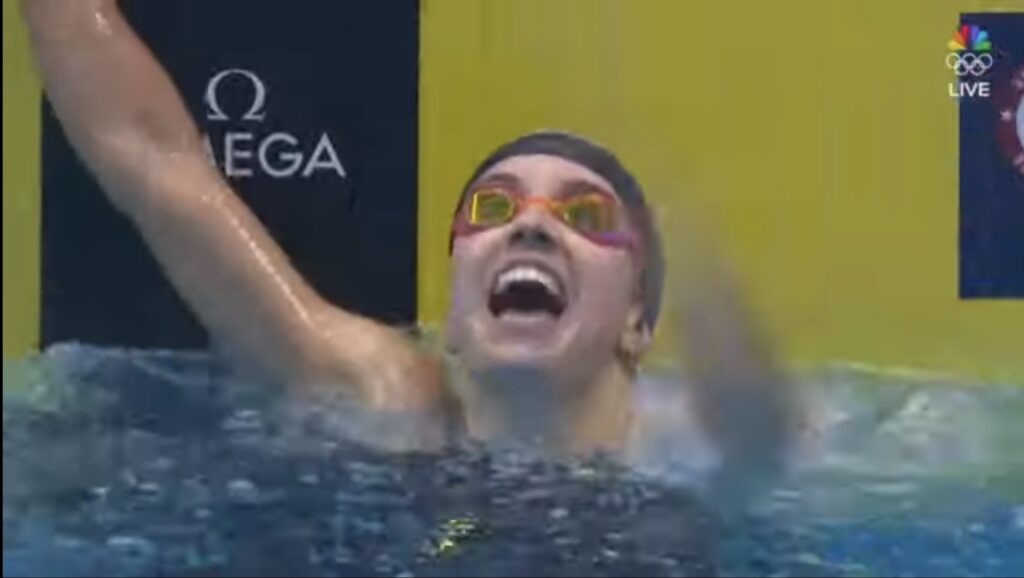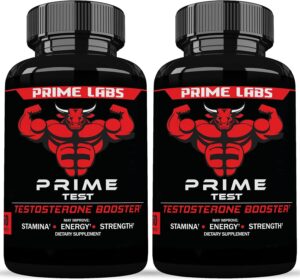
Regan Smith’s Journey to Stardom
Regan Smith, a household name in the world of swimming, solidified her legacy as one of the sport’s most accomplished athletes after her remarkable performance at the Paris 2024 Olympics. Born on February 9, 2002, in Lakeville, Minnesota, Smith was drawn to the water from a young age, beginning her swimming career at the age of 9. Her early promise became evident when she broke several national age-group records, but it was her performance at the 2019 World Aquatics Championships that marked her as a future superstar. At that event, Smith broke the world record in the 200m backstroke and set another world record as part of the U.S. women’s 4x100m medley relay team. Heading into the Paris Olympics, Smith was already a well-decorated athlete, having competed in the Tokyo 2020 Olympics, where she won multiple medals, including silver and bronze.
With her eyes set on gold in Paris, Smith dedicated years to refining her technique, enhancing her endurance, and preparing mentally and physically for what would become her most successful Olympic campaign yet. By the time the Games concluded, she had secured multiple gold medals, including in the 100m and 200m backstroke events, cementing her place as a legend in swimming. But behind the scenes of this monumental achievement lay a rigorous workout and diet regimen that pushed her to her limits. Let’s take a closer look at how Regan Smith prepared for the Paris Olympics and what contributed to her success.
Regan Smith’s Workout Plan for the Paris Olympics
Preparing for the Olympics is no small feat, and Regan Smith’s training routine was meticulously crafted to maximise her performance in the water. Her workout regimen consisted of a combination of swimming, strength training, flexibility work, and mental conditioning, all of which were designed to target her speed, power, endurance, and focus.
Swimming Workouts: Focused on Technique and Endurance
Smith’s swimming sessions were the cornerstone of her workout plan. She trained six days a week, often twice a day, with each session lasting around two to three hours. These sessions were broken down into various components to work on different aspects of her performance:
- Technique Training: Smith focused heavily on refining her backstroke, which had become her signature event. Her coaches paid particular attention to her body positioning, stroke efficiency, and turns, ensuring she wasted no energy in the water. By focusing on technique, Smith was able to shave milliseconds off her time, which proved crucial in the highly competitive Olympic races.
- Endurance Sets: To build her stamina, Smith completed long-distance sets that ranged from 3,000 to 5,000 meters per session. These sets helped her develop the endurance needed to maintain her speed and power throughout the length of the race, especially in the 200m events.
- Speed Work: Sprint sets were essential in building Smith’s explosiveness off the blocks and during her races. Shorter sets of 50m or 100m at maximum effort, followed by rest intervals, were a regular part of her training. This allowed her to practice quick bursts of speed and helped her improve her overall race pace.
- Underwater Kicking Drills: Smith’s underwater dolphin kick was one of her key strengths, and she spent considerable time working on this aspect of her swimming. Dolphin kick sets, sometimes with fins, were added to her workout to develop her leg strength and allow her to stay submerged longer, which gave her a competitive edge.
- Race Simulations: In the months leading up to the Olympics, Smith regularly engaged in race simulations, where she replicated the conditions of an actual race, complete with start, turns, and finish. This helped her mentally prepare for the high-pressure environment of the Olympics and allowed her to fine-tune her race strategy.
Strength Training: Building Power and Preventing Injury
Outside the pool, Smith spent hours in the gym focusing on building muscle strength and preventing injuries. Her strength training program was designed by her coaches and a team of strength and conditioning experts to complement her swimming workouts.
- Core Workouts: A strong core is essential for swimmers to maintain a streamlined position in the water. Smith incorporated exercises like planks, Russian twists, and leg raises to strengthen her core. These workouts helped her maintain balance and stability during her races.
- Lower Body Strength: Given the importance of powerful leg kicks in swimming, Smith’s training focused heavily on building her leg strength. Squats, lunges, leg presses, and box jumps were common exercises in her routine, aimed at enhancing the power of her starts and underwater kicks.
- Upper Body Strength: Smith needed a strong upper body to propel herself through the water with each stroke. Exercises like pull-ups, lat pulldowns, bench presses, and resistance band work were included in her training to build the necessary arm and shoulder strength.
- Plyometric Exercises: To improve her explosiveness, especially off the starting blocks, Smith performed plyometric exercises like jump squats, box jumps, and medicine ball throws. These exercises helped her develop the fast-twitch muscle fibres that are crucial for short bursts of power in swimming.
- Mobility and Flexibility: Preventing injuries was a key component of Smith’s workout plan, and she dedicated time to mobility exercises and stretching routines. Yoga and Pilates were part of her weekly schedule, which helped improve her flexibility and allowed her to maintain her form throughout long training sessions.
Mental Conditioning and Recovery
Smith’s mental strength was just as important as her physical prowess. To prepare for the pressure of the Olympic stage, she worked closely with sports psychologists and mental coaches to develop techniques for staying focused and calm under pressure.
- Visualisation Techniques: Smith regularly practised visualisation, where she mentally rehearsed her races, imagining each stroke, turn, and kick. This helped her stay composed during competition and reduced pre-race anxiety.
- Mindfulness and Meditation: Meditation and mindfulness exercises allowed Smith to remain present and manage the mental demands of high-level competition. These practices were crucial in helping her maintain a positive mindset, even in the face of setbacks or stress.
- Recovery and Rest: Recovery was an essential part of Smith’s training plan. She used techniques like massage therapy, ice baths, and compression therapy to ensure her muscles recovered properly after intense workouts. Getting sufficient rest and sleep was also a priority, as it allowed her body to rebuild and repair itself in preparation for the next day’s training.
Regan Smith’s Diet Plan for the Paris Olympics
Nutrition played a critical role in Smith’s preparation for the Paris Olympics. Her diet was carefully monitored by a team of nutritionists to ensure she was fuelling her body with the right nutrients to support her training regimen and optimise her performance.
Carbohydrates: Fueling the Body
As an elite athlete, Smith needed a significant amount of energy to power through her grueling training sessions. Carbohydrates formed the foundation of her diet, providing her with the necessary fuel for endurance and performance.
- Complex Carbohydrates: Smith’s diet included a variety of complex carbohydrates, such as whole grains, oats, brown rice, sweet potatoes, and quinoa. These slow-digesting carbs provided her with a steady supply of energy throughout the day and during her long training sessions.
- Pre-Workout Snacks: Before her swimming workouts, Smith would often consume easily digestible carbohydrates, such as bananas, energy bars, or toast with jam. These foods gave her a quick energy boost without weighing her down.
Protein: Building and Repairing Muscle
To support muscle repair and recovery, Smith consumed high-quality protein sources throughout the day. Protein was particularly important for her strength training sessions and post-workout recovery.
- Lean Proteins: Smith’s diet included lean protein sources like chicken, turkey, fish, and eggs. These provided the building blocks needed for muscle repair and growth.
- Protein Shakes: After her workouts, Smith would often consume protein shakes to ensure her muscles received the necessary nutrients to recover. These shakes were typically made with whey protein, almond milk, and a banana or berries for added flavour.
Fats: Supporting Overall Health
Healthy fats were also an essential part of Smith’s diet, as they helped with overall health, hormone production, and recovery.
- Healthy Fats: Smith’s diet included sources of healthy fats such as avocados, nuts, seeds, olive oil, and fatty fish like salmon. These fats provided her with long-lasting energy and supported her body’s recovery processes.
Hydration and Supplements
Proper hydration was crucial for Smith’s performance, especially during long training sessions. She made sure to stay hydrated by drinking plenty of water throughout the day, and she used electrolyte drinks to replenish the minerals lost during intense workouts.
Additionally, Smith took supplements like omega-3 fatty acids for inflammation reduction, multivitamins to support overall health, and protein supplements to enhance muscle recovery.
Regan Smith’s gold medal performances at the Paris 2024 Olympics were the result of years of meticulous preparation, both in and out of the pool. Her combination of intense swimming workouts, strength training, mental conditioning, and a carefully structured diet all contributed to her success. By focusing on every detail of her training, recovery, and nutrition, Smith reached the pinnacle of her sport and will be remembered as one of the greatest swimmers of her generation.








